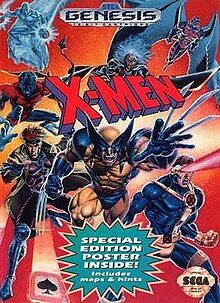
The X-Men are a superhero team appearing in American comic books published by Marvel Comics. Created by artist/co-writer Jack Kirby and editor/co-writer Stan Lee, the team first appeared in The X-Men #1. Although initially cancelled in 1970 due to low sales, following its 1975 revival and subsequent direction under writer Chris Claremont, it became one of the most recognizable and successful franchises of Marvel Comics. They have appeared in numerous books, television shows, Disney's 20th Century Studios X-Men films, and video games. The X-Men title may refer to the superhero team itself, the eponymous comic series, or the broader franchise including various solo titles and team books such as the New Mutants, Excalibur, and X-Force.

Rogue is a character appearing in American comic books published by Marvel Comics, commonly in association with the X-Men. Created by writer Chris Claremont and artist Michael Golden, she first appeared in Avengers Annual #10 (1981). In her comic book appearances, Rogue is depicted as a mutant, a subspecies of humans born with an "X-gene" that grants superhuman abilities. She is capable of absorbing the life force, attributes, memories, and superpowers of anyone through physical touch. Rogue is initially portrayed as a reluctant supervillain, but she soon joins the X-Men as a superhero and has since endured as one of its most prominent members.

X2 is a 2003 American superhero film directed by Bryan Singer and written by Michael Dougherty, Dan Harris and David Hayter, from a story by Singer, Hayter and Zak Penn. The film is based on the X-Men superhero team appearing in Marvel Comics. It is the sequel to X-Men (2000), as well as the second installment in the X-Men film series, and features an ensemble cast including Patrick Stewart, Hugh Jackman, Ian McKellen, Halle Berry, Famke Janssen, James Marsden, Rebecca Romijn-Stamos, Brian Cox, Alan Cumming, Bruce Davison, Shawn Ashmore, Aaron Stanford, Kelly Hu, and Anna Paquin. The plot, inspired by the graphic novel God Loves, Man Kills, concerns the genocidal Colonel William Stryker leading an assault on Professor Xavier's school to build his own version of Xavier's mutant-tracking computer, Cerebro, in order to destroy every mutant on Earth and to save the human race from them, forcing the X-Men to team up with the Brotherhood of Mutants to stop Stryker and save the mutant race.

X-Men: Evolution is an American animated television series based on the X-Men superhero team appearing in Marvel Comics. The series takes inspiration from the early issues of the source material and follows the X-Men as teenagers rather than adults, as they learn to control their developing mutant powers and face various threats. X-Men: Evolution ran for a total of four seasons comprising 52 episodes from November 4, 2000, to October 25, 2003, on Kids' WB, which made it the third longest-running Marvel Comics animated series at the time, behind Fox Kids' X-Men and Spider-Man. The series was aired on Disney XD from June 15, 2009 to December 30, 2011.
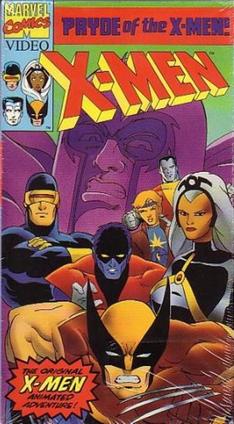
X-Men: Pryde of the X-Men is an animated television pilot originally broadcast in 1989 on the Marvel Action Universe television block, featuring Marvel Comics' mutant superheroes of the X-Men. The pilot aired infrequently in syndication and was later released on video. It later served as the basis for Konami's X-Men arcade game.

Ultimate X-Men is a superhero comic book series, which was published by Marvel Comics, from 2001 to 2009. The series is a modernized re-imagining of Marvel's long-running X-Men comic book franchise as part of the Ultimate Marvel imprint. The Ultimate X-Men exist alongside other revamped Marvel characters in Ultimate Marvel titles including Ultimate Spider-Man, Ultimate Fantastic Four and The Ultimates.
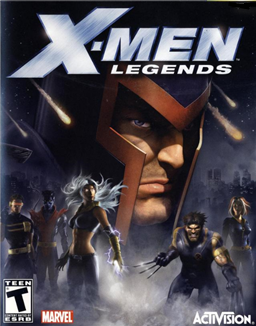
X-Men Legends is an action role-playing video game developed by Raven Software and published by Activision. It was released on the GameCube, PlayStation 2 and Xbox consoles in 2004. Barking Lizards Technologies developed the N-Gage port of the game, which was released in early 2005. Players can play as one of fifteen X-Men characters, with the ability to switch between four computer- or human-controlled characters at any time.

The Uncanny X-Men, sometimes referred to as Marvel's X-Men, is an action video game released by LJN for the NES in 1989. It is a licensed game based on the series of X-Men comics of the same name by Marvel Comics. The lineup of characters in the game is very close to those appearing in the 1989 animated pilot X-Men: Pryde of the X-Men.

X-Men: Next Dimension is a fighting game, released in 2002 for the PlayStation 2, Xbox and GameCube video game consoles. It is the third installment in the X-Men: Mutant Academy fighting game series, following X-Men: Mutant Academy and X-Men: Mutant Academy 2.

X-Men: Mutant Academy 2 is a 2.5D fighting game for the PlayStation video game console. It was developed by Paradox Development and published by Activision on September 18, 2001. It is the sequel to X-Men: Mutant Academy and predecessor to X-Men: Next Dimension.

X-Men: The End is a 2004-2006 trilogy of miniseries published by Marvel Comics, detailing the last days of the X-Men and their adventures in an alternative future. The series, which was part of Marvel's The End line of books, was written by Chris Claremont and drawn by Sean Chen, with cover art by Greg Land and Gene Ha.

X-Men: Reign of Apocalypse is a video game for the Game Boy Advance featuring the X-Men comic book characters. It was designed by Digital Eclipse and released by Activision in 2001.
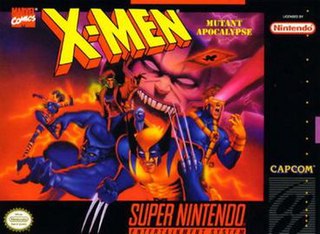
X-Men: Mutant Apocalypse is an action game developed and published by Capcom for the Super Nintendo Entertainment System in 1994. The game is based on the X-Men comic book franchise from Marvel Comics. It was the first game Capcom released based on the franchise, released a month before the fighting game titled X-Men: Children of the Atom, also released in 1994.

X-Men 2: Clone Wars is a 1995 platform game developed by Headgames and released by Sega of America for the Mega Drive/Genesis as a sequel to the 1993's X-Men. The game is based on the adventures of the Marvel Comics superhero team, the X-Men. A sequel, titled X-Women, was cancelled.

X-Men: The Official Game is the name of Activision's three tie-in video games to the 2006 film X-Men: The Last Stand. The game covers the events between the films X2 and X-Men: The Last Stand, specifically following the characters of Logan, Iceman, and Nightcrawler. It also bridges the gap between the two films, explaining why Nightcrawler is not present for The Last Stand, and also introduces new foes for the game, such as HYDRA.

X-Men: Mutant Academy is a fighting game developed by Paradox Development published by Activision. It was released for PlayStation and Game Boy Color on July 14, 2000, as a tie-in to the film X-Men, which was released on the same date. A version for the Nintendo 64 had been in development prior to the game's release, but was ultimately cancelled.
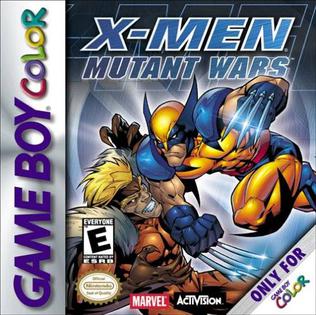
X-Men: Mutant Wars is a side-scrolling beat 'em up game for Game Boy Color released in 2000. It is the second X-Men titled released for the system. It was released to coincide with the release of the X-Men film on DVD.
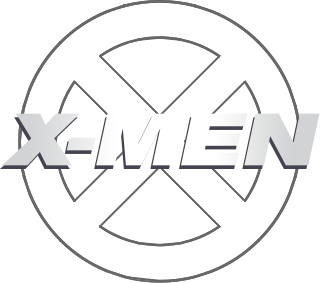
The X-Men are a fictional superhero team created by Marvel Comics that appear in comic books and other forms of media.
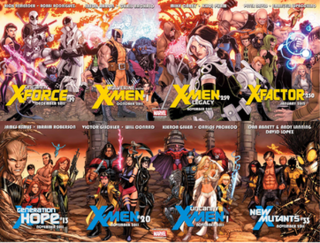
X-Men: Regenesis is a comic book branding used by Marvel Comics that ran through the X-Men family of books beginning in October 2011, following the end of the X-Men: Schism miniseries. This realignment of the mutant population is ahead of the 2012 Marvel event Avengers vs. X-Men which begins during Regenesis with the mini series Avengers: X-Sanction and brings back Cable, who was previously thought to be dead following the events of X-Men: Second Coming.

X-Men is a video game that was released in 1994 for the Sega Game Gear featuring the X-Men superhero team. In the game, most of the X-Men have been captured by Magneto; only Wolverine and Cyclops escaped the initial assault on X-Men headquarters and are available for play at the start of the game. Players rescue the other X-Men and use them and their abilities to defeat Magneto.
